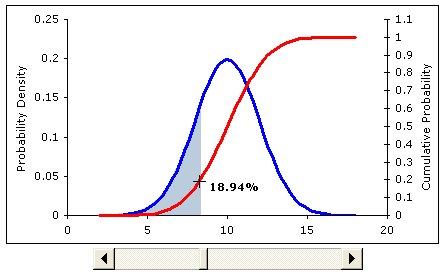

If the cumulative value is "false," the probability density function (PDF) is returned by the function. Standard Deviation: Distribution’s standard deviation.Ĭumulative: The logical value that specifies the distribution type to be used. Mean: Distribution's average value, often known as the mean value. X: The value for which the normal distribution is calculated. Here are the arguments of the normal distribution function in Excel: Here is the syntax of Excel normal distribution between two numbers: The mean for return and the standard deviation for risk helps measure the amount of return and risk. The NORMDIST function is most commonly used for stock market analysis. Considering a normal distribution for travel time, we can determine the percentage of time when the commute time ranges from 25 to 30 minutes. Take this example to better grasp Excel’s normal distribution: If you drive to work every day for 30 minutes on average, with a standard variation of 5 minutes. That is, for a specific set of parameters, it will compute the cumulative normal distribution function or the normal probability density function. For a given mean and standard deviation, it will yield the normal distribution.

The NORMDIST Function falls under the category of Excel Statistical functions. But don’t fret, as this guide will help you learn everything about normal distribution. However, grasping the nitty-gritty of using normal Excel distribution can sometimes puzzle you. Normal distribution in Excel helps in analyzing a certain variable. Did you know there is a curve that can help you understand how things are likely to be average in general, with equal parts on each side? No? Well, let us introduce you to Excel normal distribution.


 0 kommentar(er)
0 kommentar(er)
